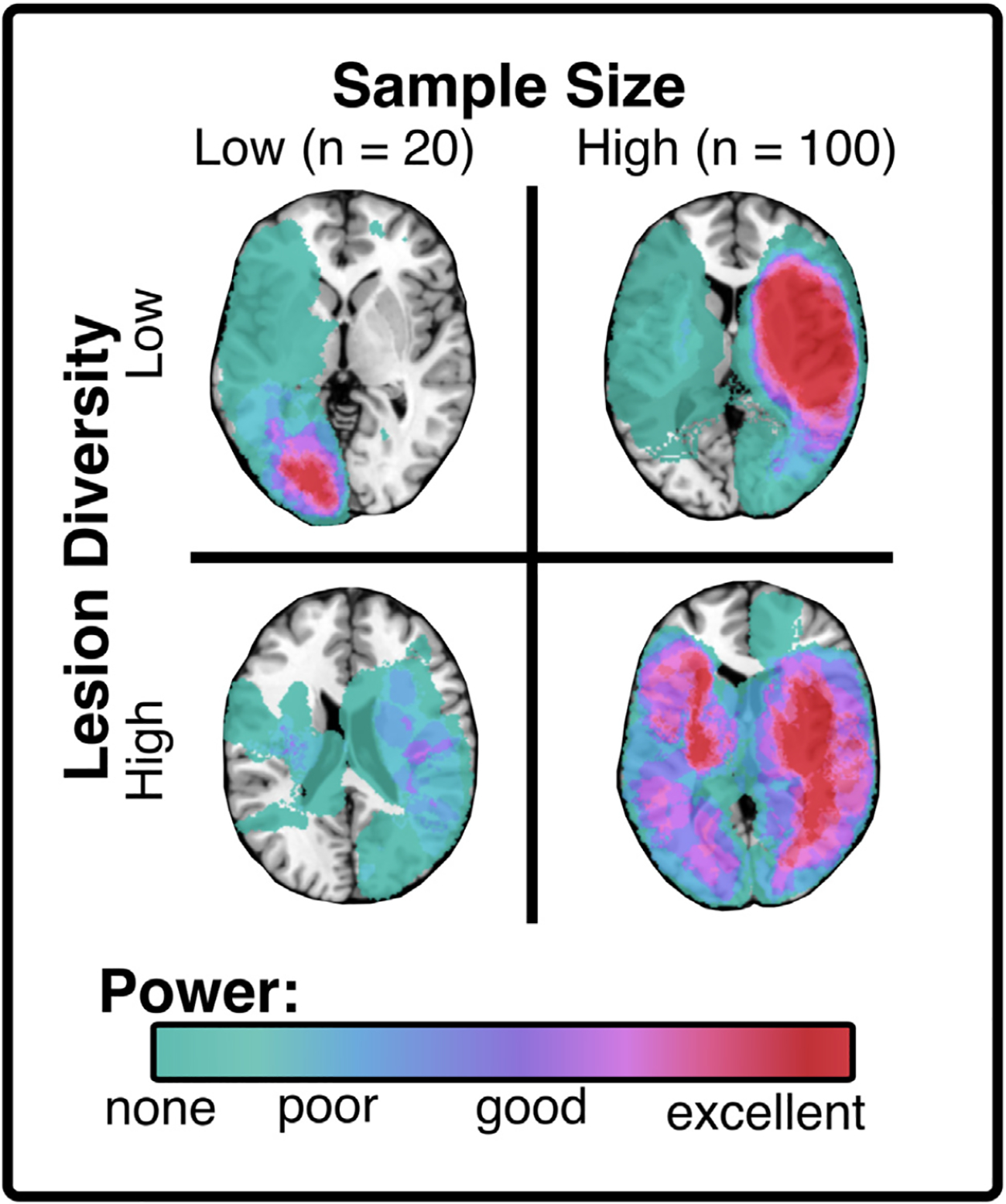Fig. 3 –

Sample size and diversity of lesion location interact to modulate voxel-wise statistical power in lesion mapping. Each panel shows real lesions from acute stroke survivors to illustrate the effect of sample size and lesion diversity on outcomes. Low diversity samples can yield high statistical power, but only within very restricted areas. Low-diversity lesion samples arise when non-representative samples are recruited by restricting inclusion to specific stroke territories (i.e., right MCA stroke only). Statistical power is optimised in large samples with diverse lesions as this yields the highest average power over the widest range of areas. Importantly, this visualisation does not distinguish between control (behaviourally spared) and test (behaviourally impaired) lesions. In real-world scenarios, power is only optimised when an area is impacted by the lesions of both spared and impaired patients. Note also that a sample size of 100 is comparatively small, and better voxel-wise power will be achieved with much larger samples (e.g., >500).
